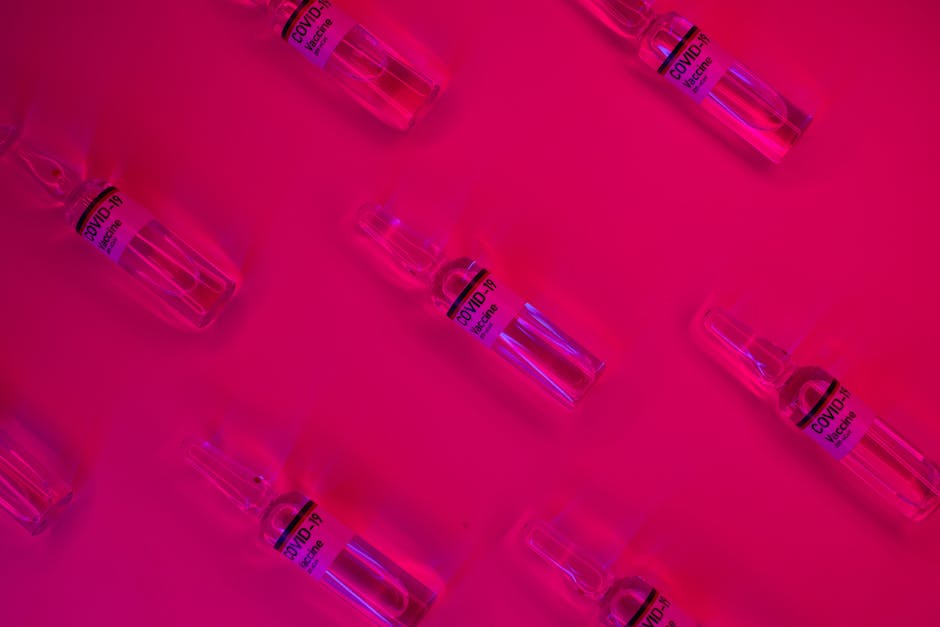Pharma-Safe: Enhancing Security in Pharmaceutical and Biotech Facilities
“This article explores three crucial strategies for strengthening security in pharmaceutical and biotech facilities. Learn how to implement effective visitor policies, leverage surveillance systems, and enhance employee training to safeguard your organization's valuable assets and personnel. ”

Pharma-Safe: Enhancing Security in Pharmaceutical and Biotech Facilities
In the high-stakes world of pharmaceutical and biotech research, maintaining a robust security posture is paramount. A single breach can jeopardize years of research, compromise intellectual property, and put employees at risk. This article explores three essential strategies to fortify your organization's defenses and create a secure environment for innovation.

1. Implementing Comprehensive Visitor Management Policies
The first line of defense in any secure facility is a well-crafted visitor management policy. This policy serves as a roadmap for employees, security personnel, and front desk staff, ensuring a unified approach to managing on-site visitors.
Key Components of an Effective Visitor Policy:
- Clear Purpose: Define the objectives of your visitor management system.
- Visitor Categories: Specify which types of visitors are allowed (e.g., business partners, investors, researchers).
- Access Restrictions: Outline which areas of the facility are off-limits to specific visitor types.
- Invitation Protocol: Establish who has the authority to invite guests and under what circumstances.
- On-site Procedures: Detail sign-in processes, badge requirements, and escort policies.
- Emergency Protocols: Include procedures for visitors during evacuations or other emergencies.
Leveraging Technology for Enhanced Security
Consider implementing a digital visitor management system to streamline and strengthen your security measures. Such systems can:
- Pre-screen visitors against watch lists
- Ensure completion of necessary NDAs and safety forms
- Track real-time occupancy data
- Maintain detailed visitor logs for audits or investigations
- Standardize protocols across multiple locations
By digitizing these processes, you create a more efficient and secure environment while maintaining a professional atmosphere for your guests.
2. Investing in Robust Surveillance and Monitoring Systems

While visitor management forms the foundation of your security strategy, advanced surveillance and monitoring systems provide an additional layer of protection crucial for pharmaceutical and biotech facilities.
Benefits of Comprehensive Surveillance:
- Intellectual Property Protection: Deter unauthorized access to sensitive areas housing proprietary information and trade secrets.
- Product Integrity: Monitor manufacturing and storage areas to prevent contamination or theft of valuable materials.
- Employee Safety: Enhance overall workplace security by monitoring common areas and entry points.
- Rapid Response: Enable security teams to quickly identify and address potential threats or emergencies.
- Deterrence: The visible presence of surveillance systems can discourage attempts at industrial espionage or other malicious activities.
When implementing surveillance systems, it's crucial to balance security needs with privacy concerns. Ensure that your monitoring practices comply with all relevant laws and regulations, and communicate clearly with employees about the purpose and extent of surveillance measures.
3. Establishing Robust Employee Training and Awareness Programs
Even the most sophisticated security systems can be compromised if employees are not properly trained. Developing a comprehensive security awareness program is essential for creating a culture of vigilance within your organization.
Key Elements of an Effective Training Program:
- Security Protocols: Educate employees on proper sign-in procedures, visitor escort policies, and handling of sensitive information.
- Threat Recognition: Train staff to identify and report suspicious activities or potential security breaches.
- Cybersecurity Awareness: Given the increasing threat of digital attacks, ensure employees understand best practices for password security and data protection.
- Emergency Response: Conduct regular drills and training sessions on how to respond to various security incidents or emergencies.
- Regulatory Compliance: Familiarize employees with industry-specific security standards and regulations.

Remember, your employees are not just potential vulnerabilities; they can be your most valuable security assets when properly trained and motivated. Regular training sessions, perhaps conducted quarterly, can help reinforce the importance of security and keep best practices fresh in everyone's minds.
Conclusion: A Holistic Approach to Pharma-Safe Facilities
In the pharmaceutical and biotech industries, where innovation and intellectual property are the lifeblood of success, security cannot be an afterthought. By implementing robust visitor management policies, leveraging advanced surveillance systems, and fostering a security-conscious culture through employee training, you create a multi-layered defense against potential threats.
Remember, security is an ongoing process, not a one-time implementation. Regularly review and update your security measures to address new challenges and technologies. By prioritizing security, you not only protect your valuable assets but also create a safe environment where groundbreaking research and development can flourish.
Investing in these security measures may seem daunting, but the cost pales in comparison to the potential losses from a security breach. In the high-stakes world of pharmaceuticals and biotech, a strong security posture isn't just a safeguard—it's a competitive advantage.